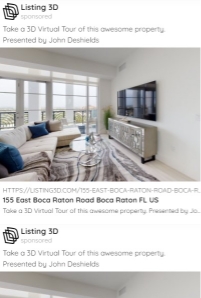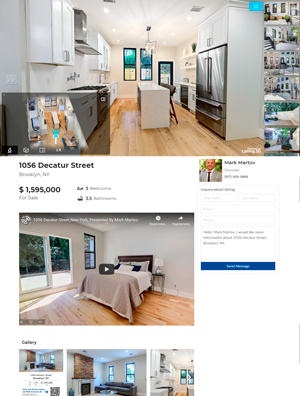Unlocking Your Personal Brand: Crafting a Unique Identity That Sets You Apart

In today’s competitive market, especially when inventory is low, the importance of personal branding intensifies. It’s no longer just about listing available properties. The emphasis should be on how agents present themselves in this dynamic and hyper-connected world. Personal branding has become the cornerstone of achieving success. In these times, it’s insufficient to merely display skills and accomplishments. Instead, crafting a genuine and distinguishable personal brand is the key to differentiating oneself from the competition and creating a lasting impression.
Building your personal brand is a conscious, strategic endeavor. It offers a platform to clarify your identity, your values, and how you wish to be recognized in the marketplace.
If you recognize the heightened importance of branding, especially in a market with limited inventory, join us. We will delve into techniques that will help you establish a potent and unforgettable personal brand that will profoundly influence both your personal and professional trajectories.
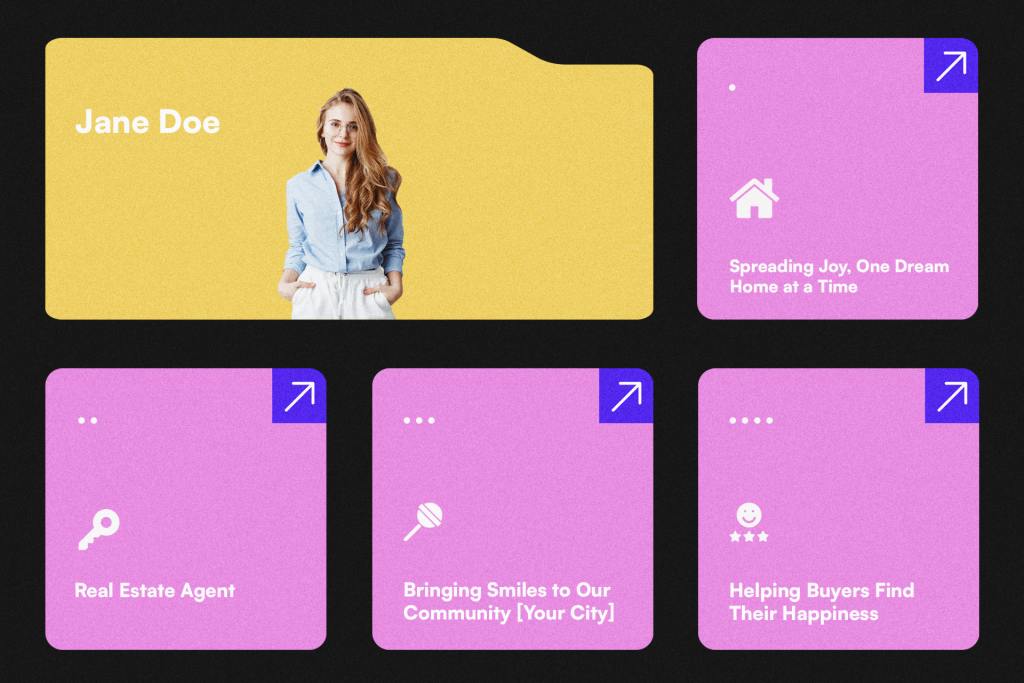
The Initial Step: Identifying Your Target Audience for Effective Marketing
At the forefront of any successful marketing endeavor lies the crucial task of determining precisely who you aim to connect with. Are your efforts directed towards potential buyers or sellers? Is your focus on engaging specifically with first-time homebuyers? No matter who your target audience is, understanding this is the cornerstone of an impactful marketing strategy that resonates with the right individuals and yields tangible results.
In this pivotal step, you lay the foundation for a more purposeful and tailored approach to your marketing initiatives. Whether you seek to captivate eager buyers in search of their dream home or captivate sellers with premium media solutions, honing in on your target audience ensures that your message finds its way to those who truly need and appreciate what you have to offer.

Checklist for Identifying Your Target Audience for Effective Marketing
1. Define Your Product or Service
- Outline the features and benefits of your product/service.
- Determine the unique value proposition you offer.
2. Broad Audience Segmentation
- Categorize the market into broad segments (e.g., buyers, sellers, renters).
- Identify which broad segment aligns best with your product or service.
3. Niche Targeting
- Narrow down your broad audience segments into specific niches (e.g., first-time homebuyers, luxury home sellers, vacation property buyers).
- Research to understand the distinct characteristics of each niche.
4. Research and Analyze
- Conduct market research using surveys, interviews, or focus groups.
- Gather data on demographics, interests, behaviors, and purchasing habits.
- Analyze competition and see who they are targeting.
5. Develop Audience Personas
- Create detailed profiles of your ideal customers.
- Include information like age, income bracket, location, lifestyle, pain points, and buying motivations.
6. Understand Their Needs
- Determine the problems or needs your target audience faces.
- Understand how your product/service addresses these needs.
7. Evaluate Marketing Channels
- Determine where your target audience spends most of their time (e.g., social media platforms, websites, offline channels).
- Choose the channels that are most effective for reaching your audience.
8. Craft a Tailored Message
- Develop a message that resonates with the identified target audience.
- Ensure the message highlights the solutions you provide for their needs.
9. Feedback Loop
- Implement feedback mechanisms to understand if your marketing message resonates with your audience.
- Adjust your approach based on feedback.
10. Monitor and Adjust
- Track the success of your marketing campaigns using analytics tools.
- Reassess and refine your target audience as needed based on campaign results.
Remember, identifying your target audience is a continuous process. As the market evolves, the needs and preferences of your audience might shift. Regularly revisiting and updating your understanding ensures that your marketing remains impactful and relevant.

Step Two: Setting Yourself Apart
With a clear understanding of your target audience, the next fundamental step lies in setting yourself apart from the sea of agents vying for attention. In a competitive real estate landscape, what will distinguish you from the rest?
As you embark on this journey of differentiation, consider all the elements that contribute to your unique identity. It might be your innovative marketing plan, designed to captivate and engage your audience like never before. Alternatively, it could be the cutting-edge media you offer, granting your clients an immersive experience that sets new industry standards. By harnessing your strengths, expertise, and personalized approach, you craft a compelling narrative that speaks to the hearts of your clientele.
For instance, offering 3D Tours for all your listings enables you to create unique posts showcasing the exceptional media services you provide. This sets you apart from other agents who solely rely on traditional photographs.
To-Do Checklist for Setting Yourself Apart in Real Estate
1. Self-assessment and SWOT Analysis
- List down your strengths, weaknesses, opportunities, and threats (SWOT).
- Identify what makes you different and how it benefits your clients.
2. Determine Your Unique Selling Proposition (USP)
- Define what differentiates you from other agents regarding service, expertise, or technology.
- Articulate this USP clearly for potential clients.
3. Upgrade Your Services
- Explore innovative marketing plans or tools.
- Consider investing in cutting-edge media like 3D Tours, virtual reality, or drone footage.
4. Showcase Your Differentiators
- Create marketing materials emphasizing your unique offerings.
- Develop a portfolio showcasing advanced media solutions you’ve used, such as 3D tours.
Example 1: Expertise in Local History & Architecture
Definition: As a real estate agent with a background in local historic preservation and architecture, I deeply understand our town’s historic homes and their architectural nuances. This enables me to provide unique insights into property value, potential renovations, and a home’s heritage.
Articulation for Potential Clients: “Not just an agent – I’m your guide to our town’s history and its architectural gems. Let me help you find not just a house, but a piece of our town’s legacy. Whether you’re looking to buy a classic home or sell a piece of history, I provide insights that go beyond the typical agent.”
Example 2: Incorporating Advanced Tech Solutions
Definition: I incorporate the latest tech solutions in real estate to give my clients an edge. This includes virtual reality home tours, AI-driven market analysis for pinpointing home values, and an app that notifies buyers instantly when a home meeting their criteria is listed.
Articulation for Potential Clients: Experience the future of real estate with me. Dive into homes without leaving yours with our VR tours, get the most accurate pricing with AI-driven analytics, and never miss out on your dream home with instant app notifications. Modern problems require modern solutions, and I’m here to deliver.
Both these examples help potential clients immediately understand the value the agent offers that other agents might not. The key is to hone in on that unique aspect and communicate it compellingly.
5. Engage in Continuous Learning
- Stay updated with the latest industry trends and technologies.
- Attend workshops, seminars, or online courses to enhance your skill set.
6. Craft Your Narrative
- Develop a brand story that highlights your journey, expertise, and the unique services you offer.
- Ensure the narrative connects emotionally with your target audience.
7. Engage with Your Audience
- Organize webinars or live sessions showcasing the cutting-edge media services you provide.
- Engage with comments and feedback, emphasizing how your offerings differ.
8. Collaborate with Specialists
- Team up with media professionals or tech experts to boost your listings.
- These collaborations can further elevate the services you offer.
9. Feedback and Refinement
- Ask clients for feedback on your unique offerings.
- Use their feedback to refine your services and marketing approach.
10. Monitor Competitors
- Stay aware of what other agents are offering.
- Adjust and innovate to ensure you remain ahead in differentiation.
11. Promotion and Marketing
- Regularly update your marketing materials to highlight your unique services.
- Use platforms like social media, email marketing, and local advertisements to promote your distinct identity.
12. Measure and Adapt
- Use analytics tools to gauge the effectiveness of your differentiation strategy.
- Adjust based on insights and continue to refine your unique selling points.
Remember, differentiation is not just about having unique services but also about effectively communicating them to your audience and ensuring they see the value in what you offer.
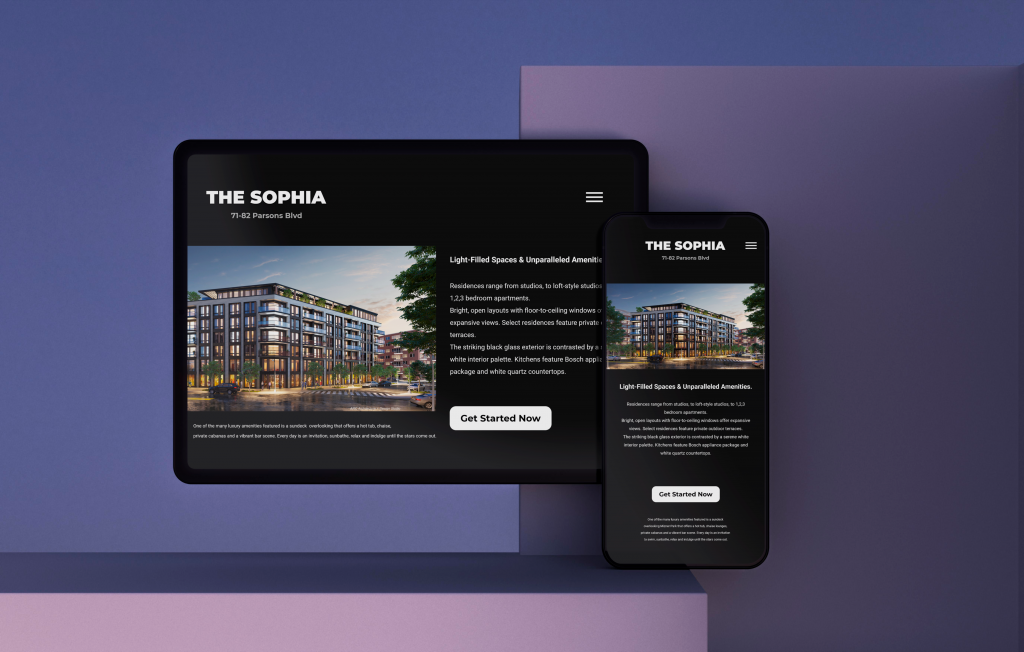
Step Four: Unleashing the Power of Visual Storytelling
In today’s visually driven world, the significance of being visually appealing in your marketing efforts cannot be overstated. A striking and cohesive design, coupled with an eye-catching color scheme, not only adds a touch of professionalism but also ensures your pages are well-organized and leave a lasting impression.
A distinctive visual identity creates an immediate recognition factor, making it easier for your audience to connect with your brand across various platforms. Consistency in your design elements fosters a sense of familiarity, reinforcing your brand’s image and creating a cohesive narrative that resonates with your clients.
Yet, a visually appealing facade must be more than just skin-deep. It must be complemented by the substance of valuable, high quality and consistent content. When you consistently provide relevant and insightful materials, it not only establishes you as an authority figure in your field but also allows the platforms you use to understand your audience better. By deciphering who your content is tailored for, these platforms become more inclined to promote your offerings, as it aligns with their mission of delivering meaningful content to their users.
The marriage of a visually appealing presentation with content of substance creates a powerful synergy. It amplifies your reach and impact, allowing your personal brand to leave a lasting mark on your audience. As you consistently showcase your expertise and cater to your clients’ needs, your reputation as a reliable and valuable resource grows, paving the way for greater success and a deeper connection with your audience.
To-Do Checklist for Unleashing the Power of Visual Storytelling
1. Understand Your Audience’s Preferences
- Research the types of visuals and content that resonate with your target audience.
- Understand which platforms your audience frequents and tailor your visual strategy accordingly.
2. Develop a Cohesive Branding Strategy
- Choose a color scheme that represents your brand’s personality.
- Determine a design aesthetic that will be consistent across all platforms (e.g., minimalist, vintage, vibrant).
3. Create High-Quality Content
- Ensure the content you produce is relevant and valuable to your audience.
- Establish a content calendar to ensure consistency.
4. Integrate Storytelling Elements
- Craft narratives that weave into your visuals. Stories create emotional connections and make content memorable.
- Use infographics, charts, or other visual aids to simplify complex topics.
5. Maintain Brand Consistency
- Use consistent fonts, colors, and design elements across all platforms.
- Create a brand guideline document to ensure consistency, especially if collaborating with others.
6. Engage with Analytics
- Track engagement metrics to understand which visual strategies are most effective.
- Adjust your visual content based on insights and feedback.
7. Promote User-Generated Content
- Encourage your audience to share their stories or visuals related to your brand.
- Feature standout user-generated content on your platforms, giving credit to creators.
8. Optimize for Platform Algorithms
- Study platform-specific best practices (e.g., for Instagram, YouTube, or Facebook).
- Adjust content types, posting times, and engagement strategies based on platform preferences.
9. Amplify with Paid Promotions
- Consider using paid advertising to boost high-performing visual content.
- Target ads to your core audience for maximum impact.
10. Network and Collaborate
- Collaborate with influencers or other brands that align with your values.
- Co-create visual content that can reach wider audiences.
Remember, while visuals are compelling, the authenticity and value of the content remain paramount. Ensure that you’re not just creating visually appealing content but also delivering substantial value to your audience. This balance is key to forging a lasting connection.
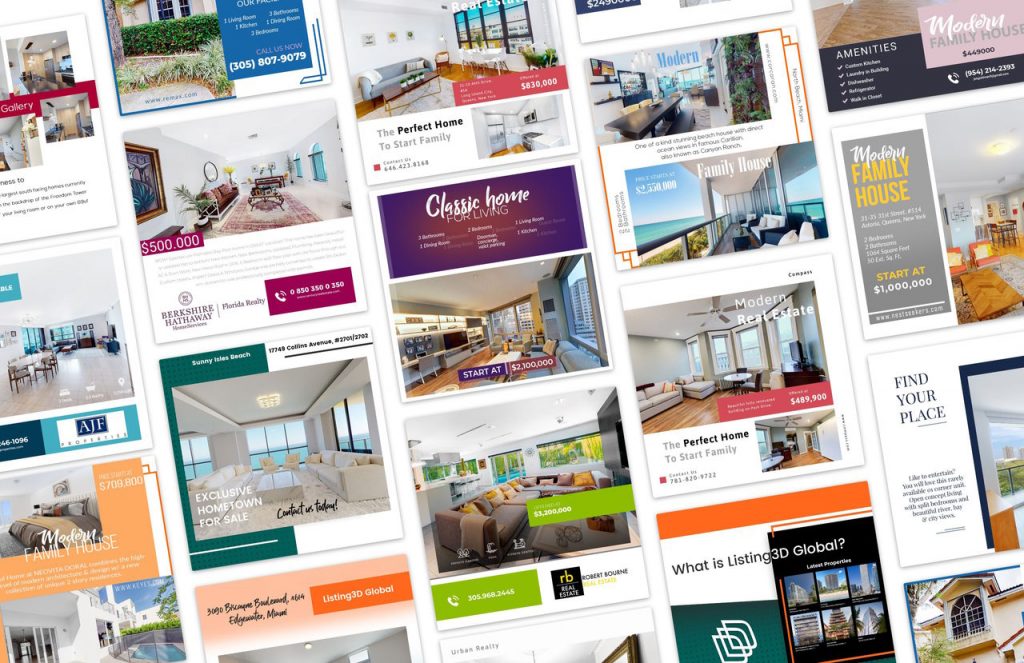
Step Five: Maximizing Your Social Media Strategy
Facebook and Instagram, being two of the leading platforms with billions of active users, offer powerful advertising capabilities. But, it is important to know how to use these capabilities to make the best use of them.
One effective strategy to enhance the visibility of your content is the use of relevant hashtags. Hashtags act as a bridge between your posts and potential followers who are interested in similar topics. By strategically incorporating industry-specific hashtags in your content, you increase the chances of attracting individuals genuinely interested in your products or services.
Furthermore, building a network of like-minded individuals and businesses in your industry can be incredibly beneficial. By adding and engaging with similar people and businesses on your social media pages, you create a community of shared interests. This fosters a sense of trust and credibility among your audience, as they perceive your brand as a valuable part of their industry’s conversation.
Employing Facebook and Instagram ads with targeted precision, using relevant hashtags, and connecting with like-minded individuals in your industry are all integral components of a successful social media strategy. By embracing these tactics, businesses can attract the right audience, bolster their online presence, and ultimately, thrive in the digital realm.
Step Six: Dominate The Market
With these essential strategies and insights, you are now equipped to unlock the full potential of your personal brand. By staying true to yourself, showcasing your passion, and delivering exceptional experiences, you can forge a unique identity that resonates with your clients and propels you towards unmatched success in the ever-evolving world of real estate. So, go forth with confidence and embrace the journey of crafting a personal brand that leaves an indelible mark on your personal and professional pursuits.
Additional Services
Take Your Marketing Even Further


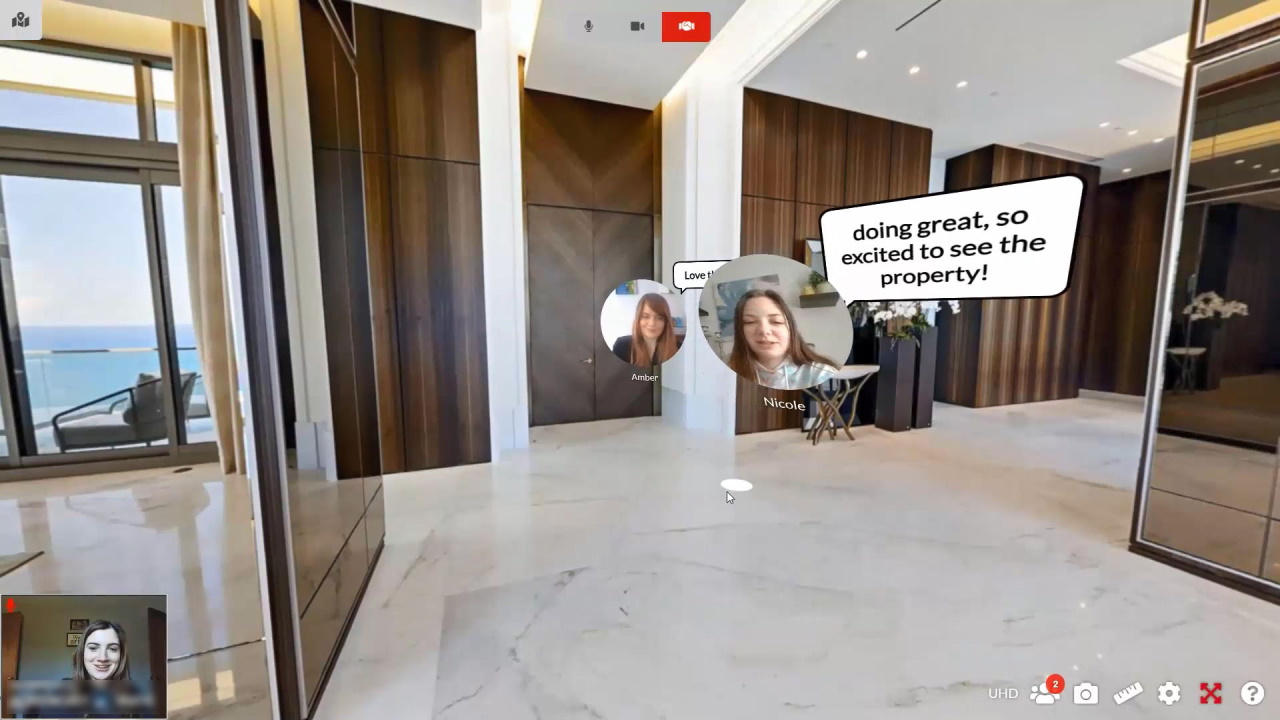



Additional Features at no cost
Part of any package


